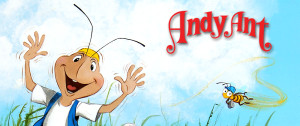
Story Writing Hints
By
Gerald D. O’Nan
Author of the
Adventures of Andy Ant Books
(Note: I will try to give you hints and ideas about writing stories using the 8 books in The Adventures of Andy Ant as examples. Having a set of the Andy Ant books available will help you understand the context better, but it isn’t necessary if you have a good imagination.)
Mistakes to Avoid
Remember that the publisher you choose, or the one that chooses you, is operating a business. The publisher’s primary objective is to make money. Taking on a new author comes with a multitude of risks. If the publisher decides to publish your book will it be a “one-hit wonder” or do you have more books of the same genre to be written?
We started out with four books which allowed the publisher to look beyond a “one-hit wonder.” The first mistake to avoid is not being prepared to present more than one book to the publisher. The other books don’t have to be completed or written, but you should have some storyline ideas and preferably more than one outline for the stories.
The next mistake to avoid is representing yourself with the publisher. Consider enlisting an agent to represent you. This is a big step and finding the right kind of agent isn’t always easy. Your agent will normally take a percentage of the royalties you receive as payment. Consequently, some agents may not be willing to enter into a contractual relationship with you until they feel there is money at the end of the ”tunnel.” We made the mistake of not engaging an agent! Our publisher was not comfortable dealing directly with authors – and we were not accustomed to dealing with publishers. Consequently, it created a strained relationship from the beginning.
When we entered into the publishing contract we were reluctant to give more rights to the publisher other than print media rights. The publisher wanted audio, video, and other media rights. If we had had the advice from a good agent we might have given these other rights to allow the publisher allowing it to envision a better profit stream.
Another mistake to avoid is not following the publishing work carefully. In an earlier hint, I mentioned the importance of carefully selecting your audience and writing for that audience. The Adventures of Andy Ant were almost “experimental” in that regard. We tried to target both the secular audience as well as a socially conservative/Christian audience. Each of the Adventures of Andy Ant stories mentions God and contains a “Note to Parents.” The “Note to Parents” which mentions the Bible was to have been included on the inside flap of the dust jacket. The books with the dust jacket were to be marketed to the socially conservative/Christian audience (including the “Note to Parents”) and the books without the dust jacket (minus the “Note to Parents”) marketed to the broader secular audience.
For whatever reason, the publisher had the “Note to Parents” printed on the inside cover of each book rather than the dust jackets. Moreover, the inside flaps of the dust jackets were blank, leaving even the casual observer to conclude that something was missing. I mention this mistake as an example of not following the publishing process as thoroughly as we now wish we could have. While much of the publishing details are out of your control, make an effort to be involved.
Another mistake often made by authors is knowing where your expertise is and where it is lacking. When we started this publishing process we had some publishing knowledge but little expertise. This became a real frustration for the publisher and we were perceived as “very difficult to deal with” people.
I made a significant mistake by approving the sketches for a coloring book that accompanied the books. I had no expertise in coloring books (other than coloring in them as a kid) and the sketches were artistically less than acceptable. The artist who did the pictures for the books was very disappointed. Here again, you need to know what you know and know what you don’t know.
Copyright © 2023 by Gerald D. O’Nan All Rights Reserved. No part of this document may be used or reproduced by any means, graphic, electronic, or mechanical, including photocopying, recording, taping, or by any information storage retrieval system without the expressed written permission of the author except in the case of brief quotations embodied in critical articles and reviews.



